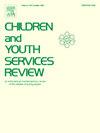Comparing the relationship between three resilience frameworks and mental health outcomes among children who experienced multiple adverse childhood experiences
IF 2.4
2区 社会学
Q1 FAMILY STUDIES
引用次数: 0
Abstract
Adverse childhood experiences (ACEs) have a well-established relationship with childhood mental health. Researchers have begun to explore resilience frameworks like the National Scientific Center for the Developing Child (NSCDC), Health Outcomes from Positive Experiences (HOPE), and cumulative positive childhood experiences (PCEs) frameworks that identify protective factors to build resilience to overcome ACEs. However, each of these frameworks has a limited evidence base with few studies examining the relationship between the entire framework and childhood outcomes among children who experienced ACEs. This study examined whether the NSCDC or HOPE framework had a stronger relationship with childhood mental health issues when including and excluding ACEs; the study also examined whether a cumulative PCE score improved the association between each framework and childhood mental health issues. Secondary data analysis was conducted using a sample of 65,017 children between 6 and 17 years old from the 2018–2020 National Survey for Children’s Health. Based on model comparisons using hierarchical logistic regression before and after controlling for ACEs, the NSCDC and HOPE frameworks were associated with childhood mental health. However, the NSCDC framework had a stronger relationship. The NSCDC cumulative PCE score slightly improved the models while the HOPE cumulative PCE score did not significantly strengthen the models. Significant protective factors were identified from both frameworks. The results demonstrated the potential for the NSCDC framework to build resilience to overcome ACEs. Future ACEs interventions should potentially seek to integrate the NSCDC framework to potentially mitigate the impact of ACEs.
求助全文
约1分钟内获得全文
求助全文
来源期刊

Children and Youth Services Review
Multiple-
CiteScore
6.30
自引率
6.10%
发文量
303
期刊介绍:
Children and Youth Services Review is an interdisciplinary forum for critical scholarship regarding service programs for children and youth. The journal will publish full-length articles, current research and policy notes, and book reviews.
 求助内容:
求助内容: 应助结果提醒方式:
应助结果提醒方式:


